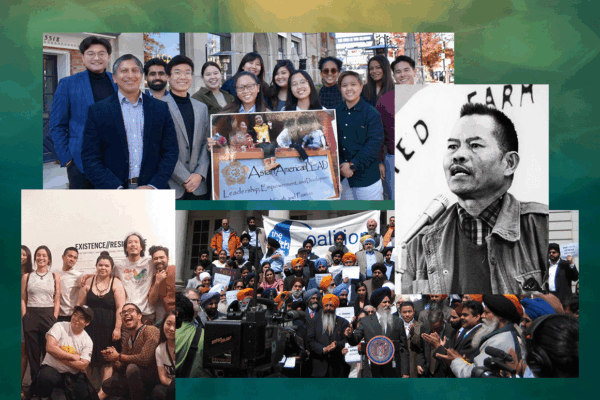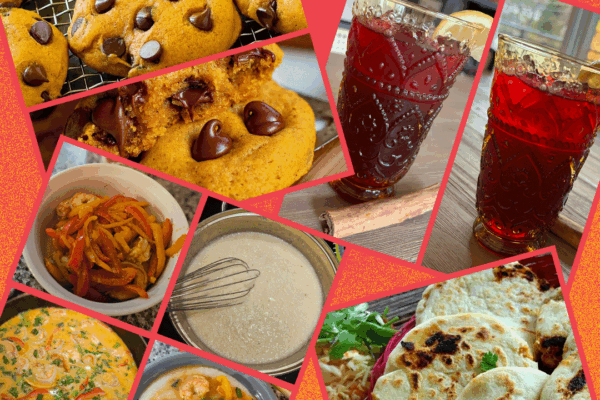My family history is deeply intertwined with the economic, political, and historical dynamics of both Korea and Hawaii in the early 1900s.

Photo caption: This is my immediate family on a recent trip to Hawaii. From left (my father, my sister, me, my mother).
My family history is deeply intertwined with the economic, political, and historical dynamics of both Korea and Hawaii in the early 1900s. My paternal great grandparents were Korean but came to Hawaii in search of work. They were encouraged by American corporations and government officials looking for immigrant laborers. My great grandfather was among the first wave of Korean immigrants to the islands. He went from island to island finding work on the sugar plantations. My great grandmother arrived in Oahu from Korea after connecting with my great grandfather through a “picture bride” service.
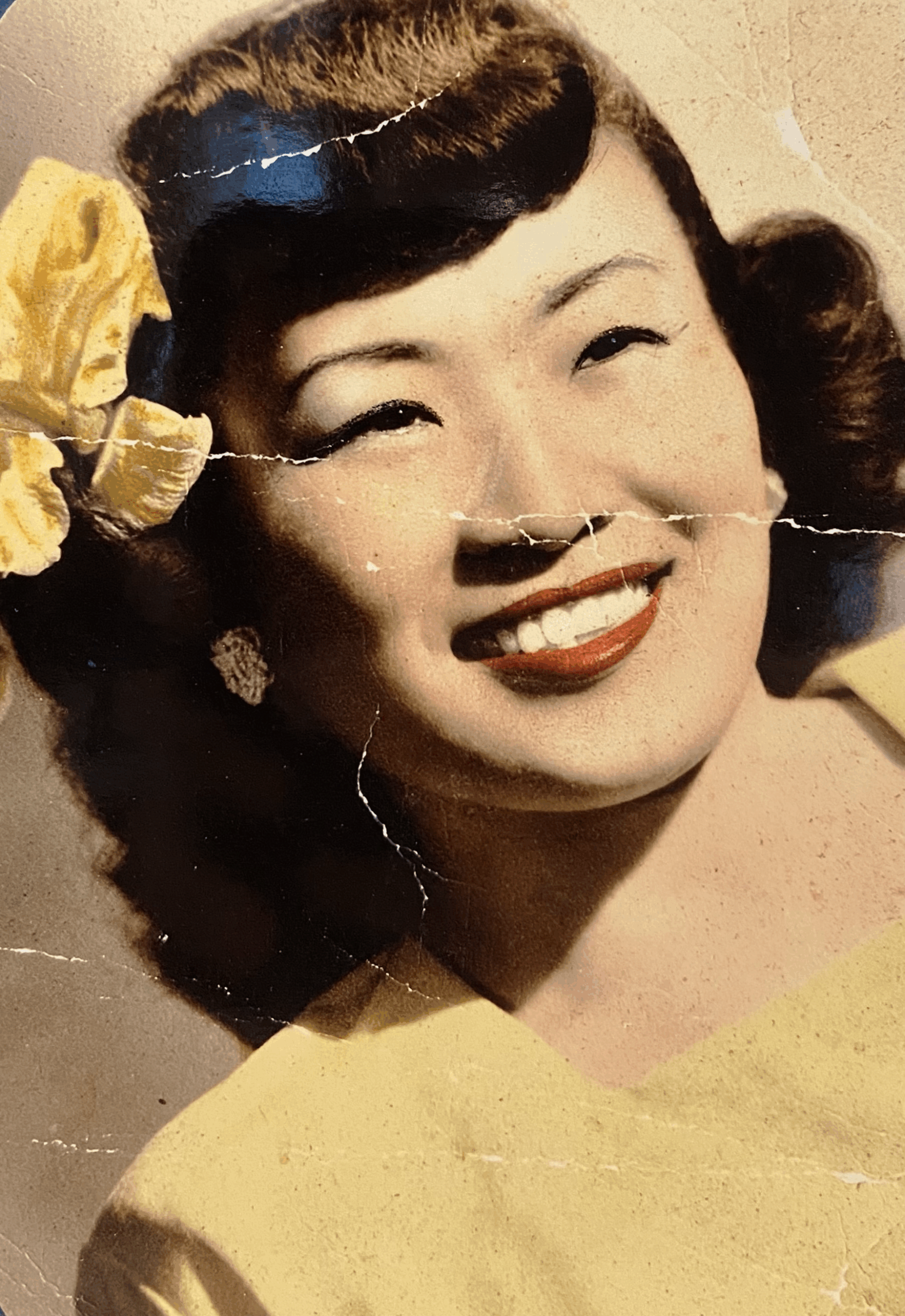
Photo caption: This is a portrait of my grandmother when she was still living in Hawaii.
They found permanent work at the Waialua Sugar Plantation, located on the North Shore of Oahu. They raised their eight children there – including my grandmother. You’ll find many of the original laborer houses remain today. I was lucky enough to see the area where my great grandparents built their life together and raised their children. This is where my grandmother spent the first 16 years of her life. The remains of the plantation are an important reminder of the sacrifices made by immigrant workers and their families during this formative period in Hawaii’s history.
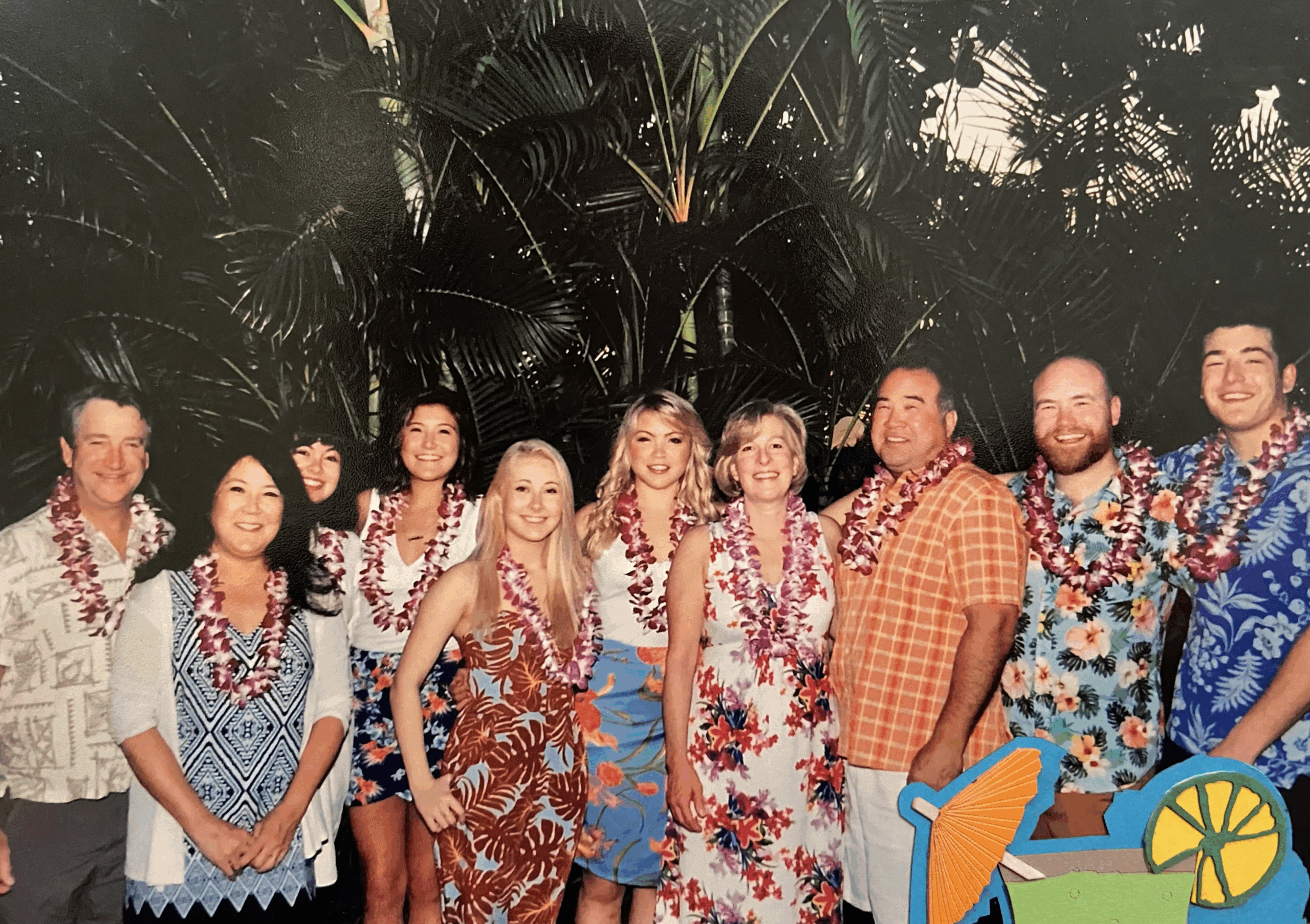
Photo caption: This is from a trip my immediate family and my aunt, uncle, and some of my cousins took to Hawaii in 2017. It was wonderful to visit the islands as a family.
In the late 1930s, my grandmother moved from the North Shore to Waikiki. When World War II began, my grandmother dropped out of high school to help support her family. Some of my grandmother’s older sisters had married Japanese men. Due to rampant anti-Japanese racism, my grandmother’s Japanese in-laws and her sisters who had married Japanese men were unable to find work. My grandmother found work at Tripler Hospital in Waikiki where she met my paternal grandfather, an American corpsman stationed there during the war.
Like many cultures, Korean history, cultural values, and traditions are interwoven into the cuisine. Below are some of my favorite Korean dishes and the stories behind them.
If you are ever looking for some Korean cooking inspiration, I recommend visiting Maangchi’s website or YouTube page! She is known as the “Korean Julia Child” and puts out both traditional and more modern Korean recipes. Her tteokbokki, my current favorite Korean dish, is among the best out there! You can find ingredients at any Lotte Market, H Mart, or local Korean grocer.
- Kimchi
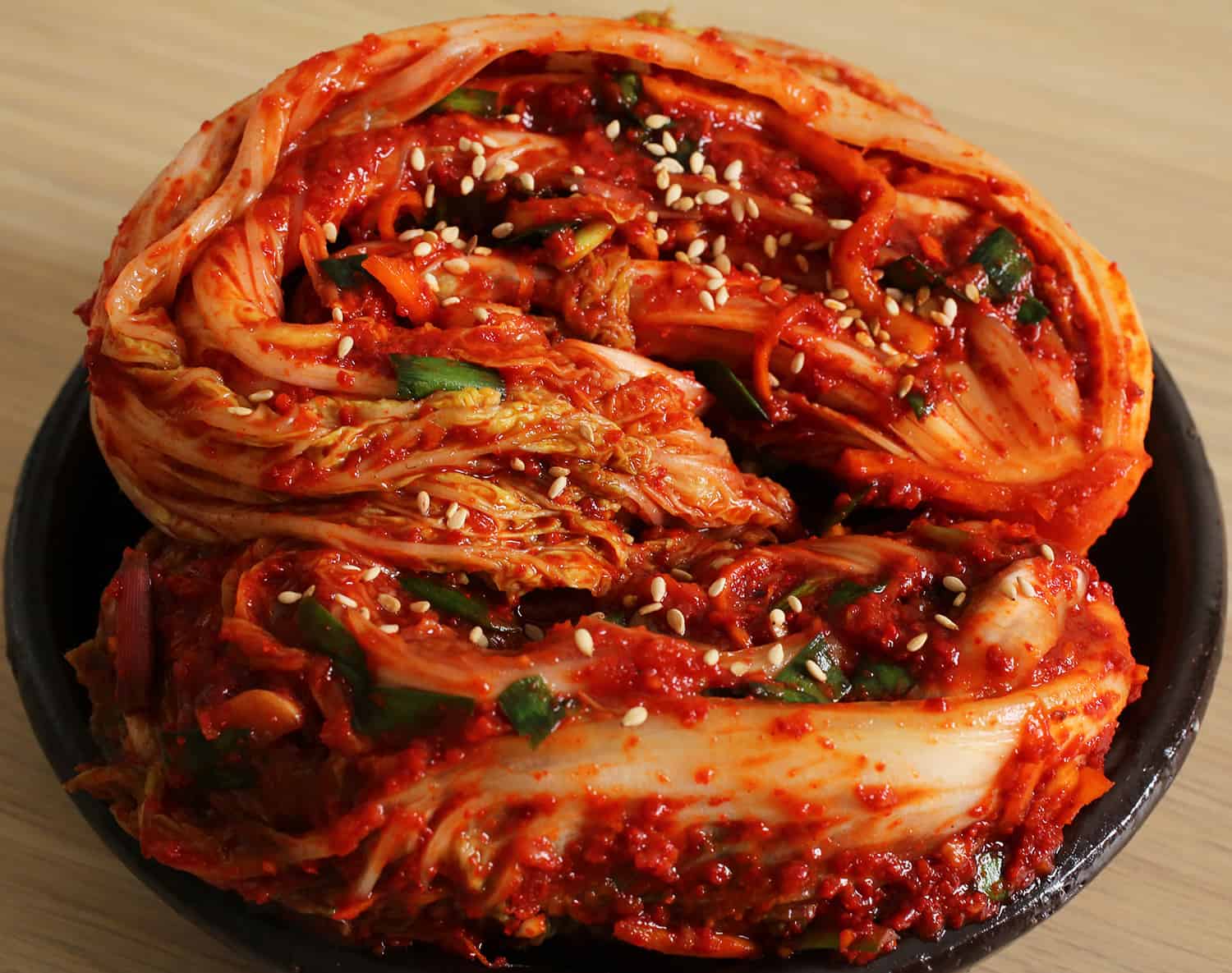
-
Featured in almost every Korean meal, kimchi is among the most famous and well-known Korean dishes. Historians have traced kimchi’s roots back around 4,000 years ago. Like many cultural staples, kimchi was created out of necessity. The fermentation and storage provided an important source of nutrition and food security during the cold winter months. Winter kimchi, called kimjang or gimjang, uses the traditional fermentation and storage process. Traditionally, kimchi was stored in large earthenware jars called onggi, however many Koreans simply use their fridges today. While the kimchi making process has evolved over the years, the importance of the dish and the process by which it is made remains an important feature in Korean households. This process is recognized by UNESCO as an Intangible Cultural Heritage.
While many are familiar with kimchi made from napa cabbage, the word kimchi describes a variety of salted, fermented vegetables. My favorite is pa-kimchi which is made from scallions. Kimchi is a fantastic source of nutrients, probiotics, and is believed to reduce inflammation. It’s a healthy addition to any meal!
- Meat Jun
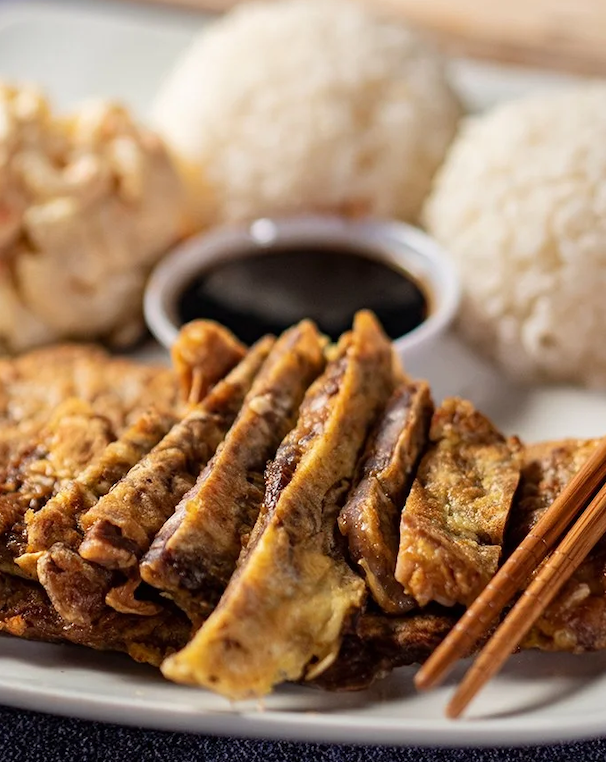
-
Meat Jun is a Hawaiian dish with Korean origins. Often eaten with rice, mac salad, and banchan (communal side dishes), this dish features thinly sliced, marinated beef that is dipped in egg batter and fried. You can find this dish at many Korean-owned plate lunch spots across the Hawaiian Islands. Japanese, Korean, Chinese, and Filipino culture is woven into the cultural fabric in the Hawaiian Islands due the generations of immigrants that arrived there from their native countries. Meat Jun represents the intertwining of Korean and Hawaiian culture and reminds me of my family’s roots in both Korea and the Hawaiian island of Oahu, where my great grandparents worked on the sugar plantations. Meat Jun is reserved for special occasions in Korea but is an everyday staple in Hawaii.
- Korean Fried Chicken
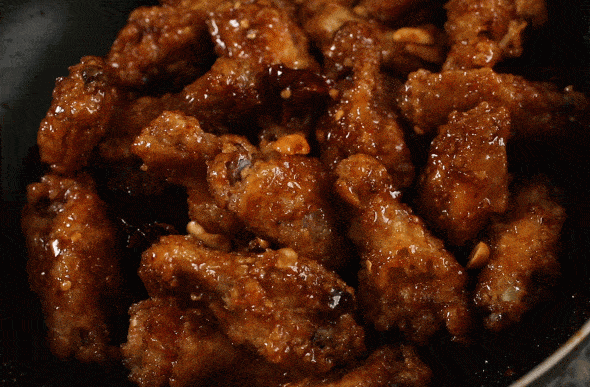
-
Korean fried chicken was first created in South Korea. However, many Korean-style chicken shops have popped up across the United States in recent years. While the origins of Korean chicken can be traced back to the Joseon dynasty, Black American soldiers are often credited with introducing fried chicken to Koreans during the Korean War. Until the Korean War, steaming was the most popular way to cook chicken in Korea. Korean Fried Chicken is representative of the global impact of American Black culture and the growing interconnections between the United States and South Korea today.
I recommend eating it with rice, pickled radish, and your favorite soju.
- Kimchi-jjigae and Budae-jjigae
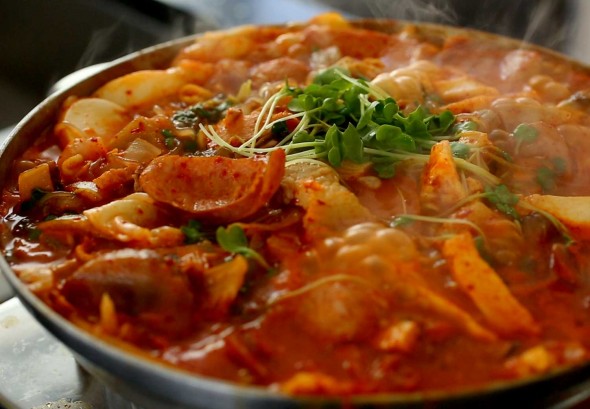
-
Kimchi-jjigae is a Korean stew (jjigae) cooked using “older” kimchi that has been fermented for longer. The complex flavors and nutritional benefits of fermented kimchi make it the perfect base for a hearty stew. Kimchi-jjigae can be tailored to fit personal preferences but is generally made with kimchi (of course), water or stock, meat or tofu, onions, garlic, and doenjang or gochujang. Gochujang, a fermented red pepper paste,. are featured in many traditional Korean dishes as flavoring agents. The stew is served with banchan and rice.
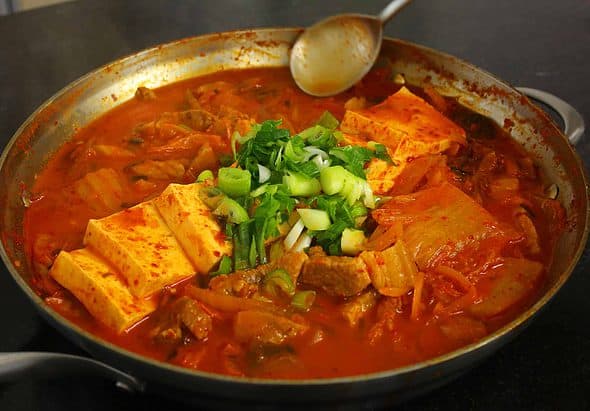
- Like kimchi-jjigae, budae-jjigae, or “army stew”, also features kimchi, stock, and gochujang. However, it also features ingredients like spam, hot dogs, instant noodles, American cheese, and beans. These simple ingredients were often left at army bases following the Korean War. Koreans faced widespread food insecurity following the war and would pick through the leftover rations or buy rations that were sold on the black market. While the dish was born out of food scarcity following the war, it remains a popular dish to this day and now features Korean staples like rice cakes, called “tteok”.
These two dishes, along with other types of jjigae, can be found in any Korean restaurant in America. Served with rice and banchan, they remain important cultural and historical touchstones for the Korean diaspora.



